Updated on April 16, 2024
What is Sau Chui 掃捶 - a Choy Li Fut kung fu technique
Sau Chui 掃捶 is a powerful Choy Li Fut kung fu hand striking technique.
It is a sweeping circular hand strike technique similar to what most of us know as a haymaker, hook punch or more closely to the boxer's, overhand punch.

Not just a haymaker’s punch
However, the technique is not just how an untrained person throws a haymaker swing.
As a trained kung fu practitioner, we will perform the forearm parry, trap or control of the opponent’s offence before whipping out the Sau Chui technique.
The combination of parry, trap or control and the circular sweeping whip of the limb makes it an effective and powerful hand technique.
Shape of sau chui 掃捶 – Choy Li Fut looping overhand punch
If we analyze the shape of Sau Chui, you will find that the entire upper limb is shaped like a sickle.
The following are descriptions of the segmental positions of the upper limb and shoulder girdle to form the sau chui technique:
- Stabilize shoulder joint by rolling shoulder blades back, squeezing them together and downwards.
Check out the reasons why we need to stabilize our shoulders for effective technique application - The upper arm is raised to shoulder height and out to the side of the body's trunk.
- The elbow is extended with a slight bend. The slight elbow bend protects the joint from injury, just in case the joint over-extends beyond the range of full extension.
- The forearm is fully pronated, i.e., the forearm is fully turned with the palm of the hand facing downward.
- The wrist is bent diagonally towards the thumb side and the knuckles are pointed towards the nose.
- Form a fist
The described positions of each segment of the upper limb should place the knuckle of the 2nd finger in an approximate position about the height between the temples, the sides of the head beside the eyes, and the ear.
In biomechanical studies, when the joints are positioned in what is known as the close-packed position, the articulating or connecting bones of the joints are in a maximum area of contact with each other.
In addition, the soft tissues around the joint are pulled taut or stretched which stabilizes the joint.
For example, the close-packed position of the knee joint is when it is in full extension. In our experience, it’s easier to stand when our knees are fully straightened than when we have them slightly bent.
Since our bone structure inherently has the biomechanical advantage at predetermined positions, why spend time and effort in physical conditioning?
In fact, training and conditioning are very much part of our ability to hold this posture for high-impact stress on joints.
Our soft tissues surrounding the joints, i.e., the tendons, ligaments, fascia, and muscles must be sufficiently strong to stabilize the joints. So, it is necessary to strengthen the ligaments, tendons, and fascia so we can increase our strength capacity to stabilize the joints and keep them in place. Otherwise, we risk having the joints blowing out sideways due to the pressure of the jarring force from the knuckle of the punch impacting a target, or the foot impacting a hard surface during a kick.
Breaking it down further, the split-second timing of getting into the sickle-shaped arm-hand formation is crucial – only during the impact phase of the sau chui technique.
If we form the sau chui structures “too early”, the technique will appear stiff, rigid and not energy efficient, and its effectiveness is compromised.
Launching the sau chui is like skilfully swinging the flail. A flail is a weapon in which a ball is attached to a wooden handle with a flexible chain or rope.
Through many repetitions, with the correct timing and coordination, we can deliver the technique with fluidity and appear effortless.
The entire arm–hand formation allows us to execute the technique from multiple angles. In most application scenarios, we have the option to deliver the sau chui in a diagonally downward looping manner, bearing in mind gravity is helping with the downward swing of the arm hand.
Power source of sau chui
As the weight of our hands is light, how do we deliver a heavy powerful sau chui punch technique by relying just only on its weight?
Firstly, it is not commonly known that the power of a punch or any hand-striking technique originates from the lower body and the trunk.
The trunk, hip and waist are the large energy reservoir for powering hand-striking techniques.
Although we are focused on recruiting muscles of the shoulders, arms and hands while punching, we cannot only recruit the musculatures of the shoulder, arms and hands entirely without recruiting muscles from other parts of the body for power. Very likely, some of us are unaware that we do partially involve the muscles of other parts of our body for power generation.
How much of the power we generate throughout our body is effective in the technique?
So, the question we should ponder is: How much of the power we generate throughout our body is effective in the technique?
We will need good coordination skills and correct timing in activating the muscles to recruit them in our technique.
How do we activate our muscles, you may ask - by mindfully tensing or contracting the muscles? If some of us cannot feel the muscles working, most likely they are not engaged so, they are not energized, not hard nor contracted
.Upon properly coordinated pattern contracting most of our muscles of the legs, buttocks (gluteals), lower back, midback, and upper back activated, then our shoulders, arms and hands can drive off the pedestal support of the central skeletal structure to deliver a powerful hand striking technique.
In short, we are aiming to push our body off the ground so that we can channel the ground reactionary force through our body to our hands to execute a hand technique. In kung fu, the hand technique can be a punch, palm strike, forearm strike, or elbow strike.
Isolate thoracic cavity and pelvic girdle
In addition, we can add more force to the sau chui technique by adding our body’s rotation torque.
By rotating the thoracic cavity over the base of the pelvis and legs, we can increase the snap in the sau chui technique.
Without going into more details, we are concerned with achieving good thoracic mobility while maintaining good grounding through good stance.
For a more detailed discussion about improving stance, check out the article about stance training.
Therefore, the beginners/foundational training regimen of Choy Li Fut kung fu, focuses on conditioning stances and trunk whipping power.
Sau chui application in combination with other hand techniques
The sau chui technique must be used in combination with other blocking, hook and pry, trapping technique.
The following are some of the sau chui technique applications in combination with other techniques.
Strategy/Principle of defence
In general, the shape or form of the technique involves a combination of one hand sweeping vertically and another hand sweeping horizontally. The vertical hand sweep is the parry, block, trap and the horizontal hand sweep is the slash or cut of the sickle-shaped hand or swing of a flail weapon.
We can change the shape or form of the sau chui slightly by changing the angles of the hand sweeps.
Puoon kiu, sau chui, biu jong combination - Essentially, we can chain the hand sweep motion into a continuous movement pattern, which is similar to a set of moving cogwheels or gears that are arranged vertically and horizontally.
However, the frequency of the technique must be “dense” 密, i.e., high volume and rapid in a short duration. By having a sufficiently “dense” of the combination technique, you create wall of forearms like the fan blades of a spinning fan.
The Sau Chui combination variations
We can incorporate the combination of the sau chui techniques with footwork. By doing so, we can change direction, using the technique in multiple directions to engage with multiple opponents.
Additionally, the sau chui technique can morph into a takedown or throwing technique.
Some similar applications using the sau chui technique
Other combat arts have similar techniques as the sau chui such as boxing, kickboxing, and MMA. The boxer’s overhand punch shares similar body mechanics as the Choy Li Fut kung fu’s sau chui.
Other traditional martial arts such as karate, employs some sort of circular hook-punching technique. However, a karateka may use body mechanics in its execution.
Sau Chui training
Some body mechanics understanding when training the sau chui
To deliver a powerful sau chui technique, we should undergo training to learn the technique and to condition the structures or tissues that hold the joints together i.e., the ligaments, tendons, and fascia.
While in training, we aim to learn the shape of the sau chui technique. Part of the training is practising holding the proper form. As discussed earlier, holding the shape of our hands and with proper coordinated timing is technically and biomechanical significant. (Link to our earlier discussion **title i.e., close-packed position** about structural integrity)
Another goal in the training and conditioning program is to strengthen and improve the functioning properties of the ligament, tendons and fascia, and bone density surrounding the shoulder joint.
From the perspective of body physiology, our body has self-healing ability.
When we place adequate levels of physical stress on the body, we are essentially disrupting or creating a “shock” to the normal functions of the body. The key phrase to emphasize here is “adequate”. This means that we only stress our tissue just enough, not too much or too little. By doing so, we are disrupting the normal physiological functions within our body. Our body naturally seeks to counter and resist the disruption by rebuilding and improving physiological attributes, in this case, improving the stability strength of the soft tissue which stabilizes the joints, in anticipation of similar future disruptions.
It is important to note that the body’s rebuilding, and cellular repairs only occur during periods of recovery, not during training.
In the case of conditioning for the sau chui technique, we will need to strengthen the joints of the shoulders, elbow, and wrist.
If we bypass the conditioning phase of the training, we will risk injury. Moreover, the sau chui may not be as strong as intended.
Since the sau chui is a very powerful technique, the parts of the body involved must be sufficiently strong and sturdy to support the capacity of the technique. If sau chui technique is applied with a lack of conditioning, the potential risk of injury increases.
We would recommend training with a good Choy Li Fut kung fu coach or sifu. The sifu can guide you and help avoid pitfalls.
Some training faults and pitfalls
- Lacking in thoracic mobility and trunk of the body rotation during the sau chui technique delivery. As a result, most trainees will resort to compensating the technique by activating the shoulders and arms. What this leaves us is a higher risk of injury. Consequently, the leverage from the technique is compromised so, it is less effective with more effort or physical exertion.
- While in a fully extended elbow joint or with the elbow fully straightened, we risk hyperextending our elbow joint. We can prevent this from happening by keeping our elbows slightly bent.
- Incorrect technique: As discussed earlier , the sau chui technique combination has the capacity of simultaneously sealing up defence gaps and slashing of the arms. Check back to the earlier discussion . If the sweep of the arms is improperly performed, the technique has openings inviting the opponent’s offences.
Training methods
The following are the training methods of the sau chui:
- Empty hand drills – to learn the shape and flow of technique
- Partner drills
- Pool noodles – ideal training method for children to prevent the risk of bone stress fracture
- Wooden dummy – not recommended for children
- Sparring drills
About Bamboo Kung Fu and Sifu Kin Sze
Bamboo Kung Fu teaches the traditional Chinese martial art style of Choy Li Fut. We seek to emphasize maximizing and optimizing your body mechanics leverage in the execution of the techniques and movements of activity of daily living. While in training, we aim to help you identify issues which impede your technical or movement performance. In the long term, the learnt knowledge or information gained will transfer into good movement habits in your activities of daily living, which will minimize injury risks.
As a practicing registered massage therapist RMT in Toronto, Ontario, our Sifu, Kin Sze, believes in first addressing the body structural imbalance issues before moving forward to increasing physical capacity for better performance.
Moving ahead toward increasing technical performance without properly addressing structural imbalances can impede and compensate technical ability and potentially increase the risks of injury especially when the technical applications intensify.
Check out our kung fu classes
You may be interested in:
Kung Fu performance at the 2023 Toronto Chinatown Festival
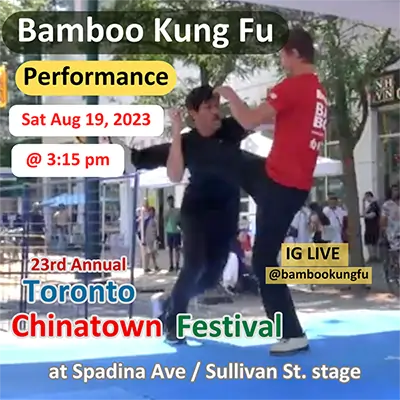
Bamboo Kung Fu students will perform Chinese martial arts on stage at the 23rd Toronto Chinatown Festival on Saturday, August 23, 2023. Our show will begin at 3:15 pm (UTC/GMT -4).
The martial arts show will be held at Spadina Avenue and Sullivan Street.
More - Martial art performance at the 2023 Toronto Chinatown Festival
Stances - The Most Important Secret in Martial Arts Practice
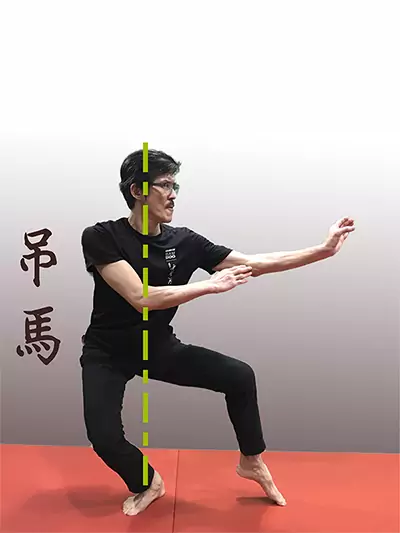
Stance is the ultimate foundation in martial arts practice. Stance is the essence of any kung fu practice. Without it, the quality of the kung fu techniques and leverage will not be effective.
More - Stances: the most important foundation in martial arts practice
Punching Power “Leaks”: How Bad Posture Lowers Punching Power
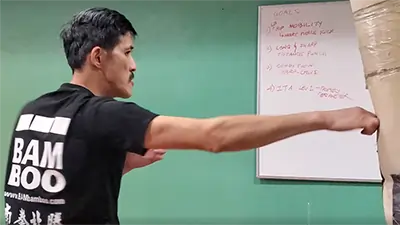
Does bad posture reduce punching power in kung fu? Yes. Forward-rounded shoulder posture reduces the leverage of the kinetic chain and affects punch accuracy, especially in Buk Sing Choy Li Fut kung fu.
More - How Bad Posture Causes Punching Power Leaks
Kung Fu Online Live Martial Arts Classes Long Distance Learning
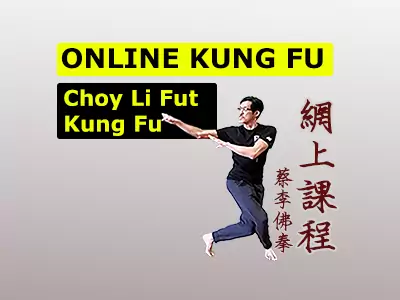
Online live interactive martial arts classes in the comfort of your home. Go to kung fu classes without travelling
More - Online Kung Fu classes
LIVE Online Kung Fu-Blind River, Elliot Lake, Thessalon, Bruce Mines
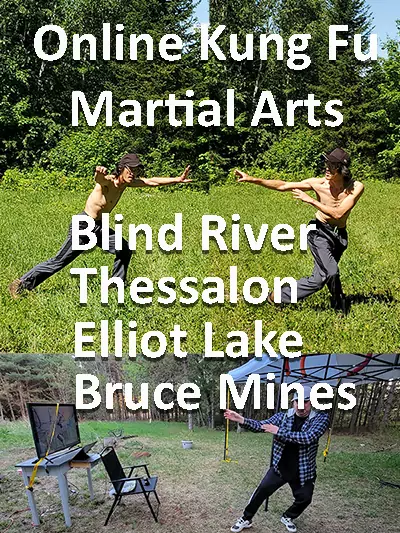
LIVE Online Kung Fu in the townships of Blind River, Elliot Lake, Thessalon, and Bruce Mines in northern Ontario.
Our online classes are cast LIVE from our location in downtown Toronto. Our online classes are Hybrid classes. This means the online classes are run together with in-person classes.
More - Online Kung Fu-Blind River, Thessalon, Elliot Lake, Bruce Mines in northern Ontario
Adult kung fu
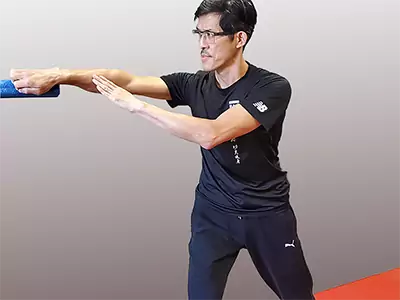
In-person and online options available.
Choy Li Fut kung fu is a dynamic martial art style with a diverse repertoire of movements. Class curriculum:
Primary goal: Improve overall fitness.
Secondary goal: Gain self-defence knowledge, Foster good biomechanics and posture to help you in day-to-day activities of daily living (ADL).
Everyone is welcome, with or without previous martial arts training experience.
More about Adult kung fu
Children kung fu

In-person and online options available.
Studies have shown the positive trends of long-term participation in physical activity programs such as martial art. Such programs help improve children’s executive functions i.e., creativity, flexibility, self-regulation, discipline, and working memory functions.
By instilling good movement patterns in the children’s kung fu program, children will gain the foundation which will set them up for a healthy and active lifestyle.
More about Children's kung fu
Essentrics™-stretching, strengthening, mobility full body exercise
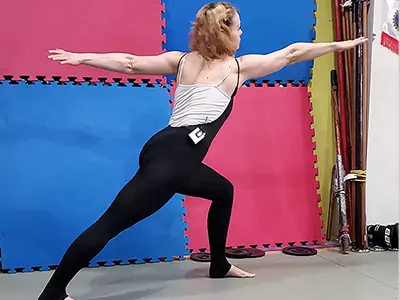
In-person and online options available.
Essentrics™ is a full-body workout that draws inspiration from ballet, Tai-Chi, that develops lean, strong muscles and improves your posture. The fluid and dynamic movements nature of the exercise is low impact and improves joint health. Lighten up your mood and move to the rhythm of the songs playlist.
More about Essentrics™
